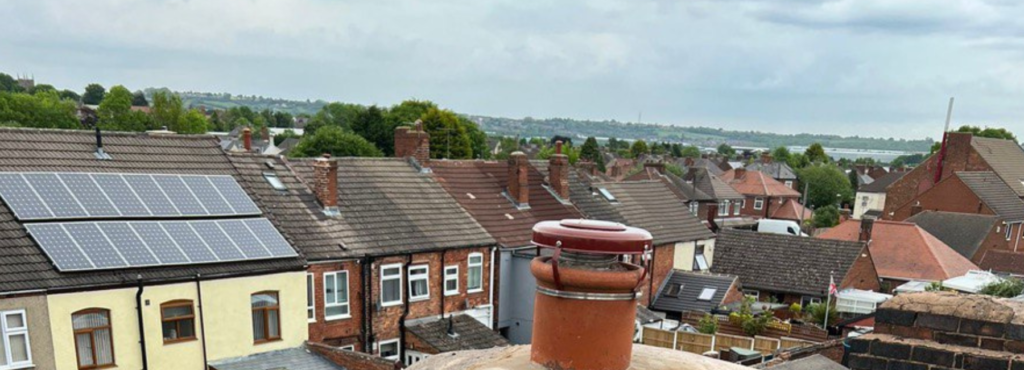Introduction
The condition of your roof plays a crucial role in protecting your home from the elements, maintaining energy efficiency, and enhancing property value. Over time, wear and tear can lead to issues such as leaks, sagging, or damaged tiles, raising the question of whether to opt for a completely new roof or a replacement. Choosing the right option depends on factors such as cost, structural integrity, and long-term durability.
At LJ Roofing Chippenham, we specialise in roofing services in Chippenham, Wiltshire, providing expert advice to homeowners looking to make informed decisions about their roofs. In this article, we explore the differences between a new and a replacement roof, helping you determine the best solution for your property.
Key Takeaways
- A new roof is necessary for new builds or significant structural changes.
- A replacement roof is ideal for upgrading an ageing or damaged roof.
- Costs vary depending on materials, labour, and the extent of work required.
- Long-term durability and maintenance should be considered when choosing between the two options.
- Professional roofing assessments help determine the best course of action.
What Is the Difference Between a New Roof and a Replacement Roof?
New Roof Installation
A new roof is installed on a newly constructed building or as part of a major renovation. It involves fitting the complete roofing system, including the framework, insulation, underlayment, and covering materials such as tiles or slate.
New roofs allow homeowners to:
- Choose modern, energy-efficient roofing materials.
- Customise the roof structure and design.
- Ensure compliance with current building regulations.
Roof Replacement
A replacement roof involves removing the old roofing material and installing a new one, often while keeping the existing roof structure in place. This option is suitable for properties where the framework is still in good condition but the surface materials need an upgrade.
A roof replacement is beneficial for:
- Repairing extensive damage from leaks, weather, or ageing.
- Enhancing insulation and energy efficiency.
- Improving the home’s appearance and value.
When to Choose a New Roof
Building a New Property
For new homes or extensions, a new roof is required to provide complete coverage and protection. This process involves selecting suitable materials, ensuring proper insulation, and complying with local planning regulations.
Major Structural Changes
If a roof has suffered severe structural damage, such as major sagging, timber rot, or foundational instability, a complete rebuild may be the safest and most cost-effective option.
Long-Term Investment
A new roof can provide decades of durability with modern, high-performance materials. If a homeowner plans to stay in the property for many years, investing in a brand-new roof may offer better long-term value.
When to Choose a Replacement Roof
Visible Wear and Ageing
Roofs naturally deteriorate over time. If a roof is over 20–30 years old and showing signs of wear such as cracked tiles, missing shingles, or frequent leaks, a replacement is likely the best option.
Ongoing Repairs Are No Longer Cost-Effective
If a roof requires frequent repairs due to persistent issues, such as recurring leaks or loose tiles, replacing it entirely can be more cost-effective than continually patching problem areas.
Energy Efficiency Upgrades
Older roofs may lack proper insulation, leading to higher energy bills. A replacement roof with improved materials and better insulation can enhance energy efficiency and reduce heating costs.
Factors to Consider When Making Your Decision
Cost and Budget
A new roof is typically more expensive than a replacement due to the additional labour and materials involved. However, if a roof’s structure is severely damaged, repeated repairs may add up to a similar cost over time.
Roofing Material Choices
Whether opting for a new or replacement roof, choosing the right materials is crucial for durability and appearance. Options include:
- Slate roofing for a classic, long-lasting solution.
- Clay or concrete tiles for traditional and cost-effective coverage.
- Metal roofing for modern, weather-resistant performance.
- Flat roofing for contemporary designs or extensions.
Planning Permissions and Building Regulations
New roof installations must adhere to strict building regulations regarding insulation, ventilation, and structural integrity. Roof replacements must also meet updated standards, particularly for insulation and fire safety. A professional roofing contractor can ensure compliance with all necessary regulations.
Why Professional Roof Assessments Are Essential
A roofing professional can evaluate the condition of an existing roof and recommend the best course of action. A thorough assessment includes:
- Checking for leaks, water damage, and structural issues.
- Examining insulation and ventilation efficiency.
- Identifying missing or damaged tiles that may require repair or replacement.
At LJ Roofing Chippenham, we provide expert assessments and recommendations for homeowners in Chippenham, Wiltshire, ensuring that every roofing solution meets the highest standards of safety and durability.
Conclusion
Deciding between a new roof and a replacement depends on factors such as the condition of the existing structure, long-term costs, and energy efficiency considerations. While a new roof is ideal for new builds and major structural changes, a replacement roof is often the best solution for ageing or damaged roofs that need an upgrade.
For professional roofing advice in Chippenham, Wiltshire, LJ Roofing Chippenham offers expert assessments and high-quality roofing services. Contact us today to discuss your roofing needs and find the best solution for your home.
Call us on: 01249 471 291
Click here to find out more about LJ Roofing Chippenham
Click here to complete our contact form and see how we can help with your roofing needs.

